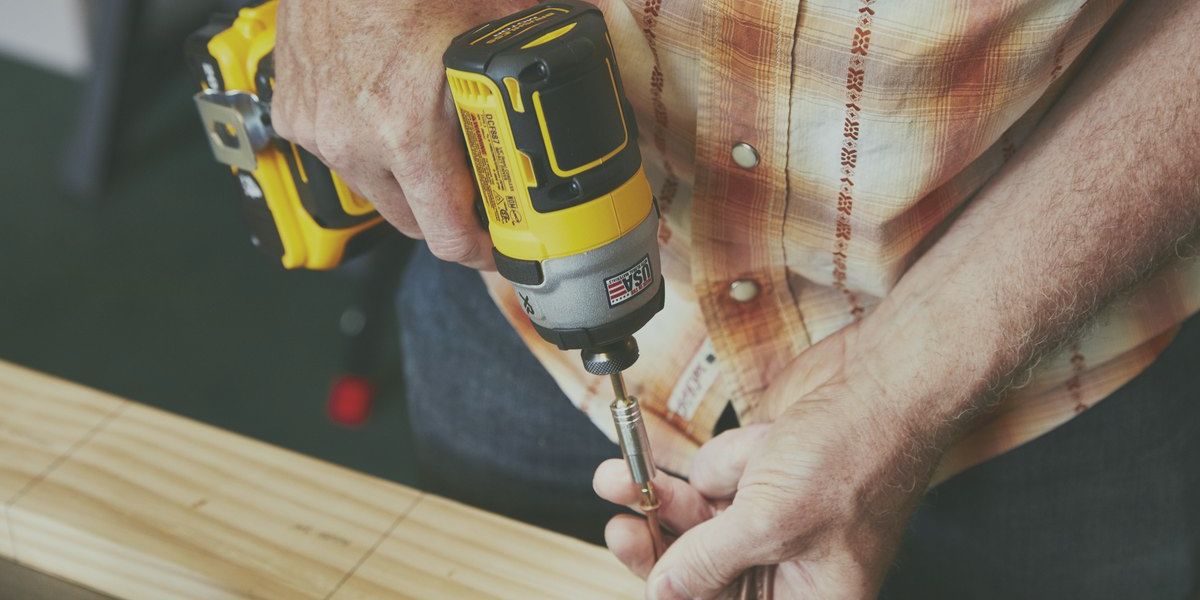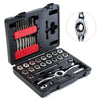
Cordless vs. Corded Hex Drivers: Which to Choose?
Navigating the world of power tools can be a daunting task, especially when it comes to choosing between cordless and corded hex drivers. In this in-depth guide, we'll explore the advantages and disadvantages of both types, helping you make an informed decision for your DIY projects, handyman tasks, or professional work.
Table of Contents
- Introduction to Hex Drivers
- Cordless Hex Drivers
- Pros
- Cons
- Corded Hex Drivers
- Pros
- Cons
- Factors to Consider When Choosing a Hex Driver
- Hex Driver Bits: An Overview
- How to Use a Powered Hex Driver
- Examples of Projects Suited for Cordless and Corded Hex Drivers
- Conclusion
Introduction to Hex Drivers
Hex drivers, also known as hex screwdrivers or nut drivers, are essential tools for a wide range of applications. They're designed to drive hexagonal-headed screws, bolts, and nuts, making them a versatile addition to any toolbox. Whether you're a DIY enthusiast, a hobbyist, or a professional, a hex driver is a must-have tool for tasks ranging from assembling furniture to installing electrical components.
Cordless Hex Drivers
Cordless hex drivers are battery-powered, providing the freedom to work without being tethered to a power source. They offer many advantages for various tasks but also come with some drawbacks.
Pros
- Portability: Cordless hex drivers can be used anywhere without the need for a nearby power outlet, making them ideal for outdoor projects or job sites with limited access to electricity.
- Ease of use: Without a power cord, cordless hex drivers are easier to maneuver and can be used in tight spaces without the hassle of a cord getting in the way.
- Flexibility: Many cordless hex drivers feature adjustable torque settings, allowing you to tailor the tool's performance to suit the task at hand.
Cons
- Limited battery life: Battery-powered hex drivers require regular recharging, which can be inconvenient and time-consuming. If you're working on a large project or using the hex driver for extended periods, you may need to invest in additional batteries.
- Reduced power: Cordless hex drivers may not deliver the same level of power as their corded counterparts, making them less suitable for heavy-duty tasks.
- Higher cost: Cordless hex drivers are typically more expensive than corded models, especially when considering the cost of batteries and chargers.
Related Article: Ultimate Guide to DIY Hex Key Sets
Corded Hex Drivers
Corded hex drivers rely on a direct connection to a power source, offering consistent power and performance. However, this also means they come with some limitations in terms of mobility and ease of use.
Pros
- Continuous power: With a direct connection to an electrical outlet, corded hex drivers deliver consistent power without the need for recharging or replacing batteries.
- Increased power: Corded hex drivers generally offer more power than their cordless counterparts, making them better suited for heavy-duty tasks or projects requiring prolonged use.
- Lower cost: Corded hex drivers are often more affordable than cordless models, as there's no need to purchase additional batteries or chargers.
Cons
- Limited mobility: Being tethered to a power source restricts the range of movement and can make it difficult to work in tight spaces or on outdoor projects without access to electricity.
- Cord management: Dealing with a power cord can be cumbersome and may increase the risk of accidents or damage to the tool if not managed properly.
Factors to Consider When Choosing a Hex Driver
When deciding between a cordless and corded hex driver, several factors should be considered:
- Project type: Consider the types of projects you'll be working on and whether portability or power is more important. If you frequently work on outdoor projects or in tight spaces, a cordless hex driver may be more suitable. On the other hand, if you need consistent power for heavy-duty tasks, a corded hex driver might be a better choice.
- Budget: Cordless hex drivers tend to be more expensive, so consider your budget when making a decision. If cost is a significant factor, a corded hex driver may be the more economical option.
- Battery life: If you opt for a cordless hex driver, consider investing in high-quality batteries with longer runtimes to minimize downtime during projects.
5. Hex Driver Bits: An Overview
Hex driver bits are an essential component of hex drivers, as they're the part of the tool that makes direct contact with the fasteners. These bits come in various sizes and shapes to accommodate different types of screws, bolts, and nuts. Understanding the basics of hex driver bits will help you select the right ones for your projects and ensure optimal performance from your hex driver.
Types of Hex Driver Bits
There are several types of hex driver bits, each designed for specific applications:
- Standard hex bits: These bits have a hexagonal shape and are used for driving hex-headed fasteners. They're available in both metric and SAE (inch) sizes, so it's important to choose the correct size for the fastener you're working with.
- Ball-end hex bits: Ball-end hex bits feature a rounded tip, allowing them to engage with fasteners at an angle. This design makes them ideal for working in tight spaces or hard-to-reach areas.
- Magnetic hex bits: Magnetic hex bits have a magnetized tip that holds the fastener securely in place during operation. This feature can be particularly useful when working with small or difficult-to-handle fasteners.
- Impact-rated hex bits: Designed for use with impact drivers, these bits are made from stronger materials and can withstand the high torque generated by impact tools. If you're using an impact driver, it's essential to choose impact-rated bits to prevent damage to both the bit and the fastener.
How to Use a Powered Hex Driver
Using a powered hex driver is straightforward, but it's essential to follow proper safety precautions and techniques to ensure optimal performance and prevent accidents:
- Choose the appropriate bit: Select a hex bit that matches the size and shape of the screw, bolt, or nut you're working with. Using an incorrect bit can damage the fastener or the tool.
- Secure the bit: Insert the hex bit into the driver's chuck and ensure it's tightly secured. For cordless hex drivers with adjustable torque settings, choose the appropriate setting for the task at hand.
- Position the hex driver: Align the bit with the fastener, applying even pressure to ensure a secure fit. Hold the tool firmly with both hands if possible, maintaining control and stability throughout the process.
- Operate the driver: Squeeze the trigger gently to begin driving the fastener. Apply steady pressure and avoid over-tightening, which can strip the threads or damage the material you're working with.
- Reverse the direction: To loosen or remove a fastener, simply switch the driver's direction setting and follow the same steps.
Examples of Projects Suited for Cordless and Corded Hex Drivers
- Cordless hex drivers are ideal for tasks such as assembling furniture, installing window treatments, or working on automotive projects where portability and ease of use are essential.
-
Corded hex drivers excel in heavy-duty applications like construction, electrical work, or tasks requiring consistent power and performance.
Conclusion
Choosing between a cordless and corded hex driver ultimately comes down to your specific needs, preferences, and the types of projects you'll be working on.
Cordless hex drivers offer portability and ease of use, making them an excellent choice for DIY enthusiasts and professionals who need flexibility and mobility.
On the other hand, corded hex drivers provide continuous power and increased performance, making them better suited for heavy-duty tasks and prolonged use.
No matter which type of hex driver you choose, investing in quality tools and using them safely and effectively will ensure successful completion of your projects and a satisfying experience.
Related Article: Corded Power Tools vs. Cordless



